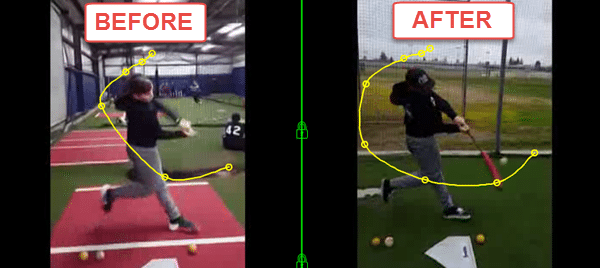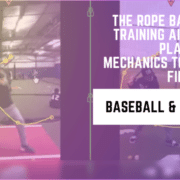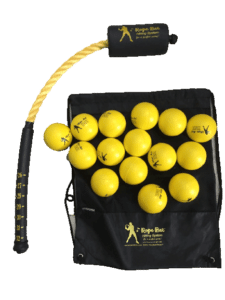Discover in the Rope Bat review how this training aid teaches hitters place hitting mechanical drills to consistently drive the ball to the opposite field. Great to teach right handed pull hitters to hit to right field (and opposite for lefties)…
The Rope Bat: How To Take The Headache Out Of Barrel Path (A Case Study)

There are 10-days between these two videos.
(If you have a legit “down swinger”, then this Ropebat post will benefit them!)
Here’s what I have for you…
I was recently working on smoothing out the barrel path of one of my 15 year old local hitters Liam…
He had what I’ve heard called a Verizon check mark barrel path BEFORE. We worked on smoothing out the check mark into more of a curved Nike Swoosh barrel path.
What’s amazing about Liam’s transformation was that:
- It only took ten days,
- It took two total 30-minute sessions (beginning of session three was when the AFTER video was taken), and
- Liam only had access to the Ropebat during our sessions. After session number-three, his mom went ahead and purchased one for home use.*
*Results aren’t typical. Liam has a primary “feel” learning style, so the Ropebat worked well for him – and not to mention quickly with minimal use.
In the above video, we go over:
- Question a High School coach had for me at 2017 ABCA conference about changing barrel path,
- The Verizon check mark versus Nike Swoosh barrel path, and
- The RopeBat cues I use in conjunction with the “feel” of the Ropebat.
CLICK HERE for the original full Ropebat post I did awhile back that shows the swing drill we used. Or you can get it at our store here. The Ropebat is my favorite hitting aid for helping hitters learn a solid middle away and middle down barrel path. Great for hitting line drives to the opposite field!






